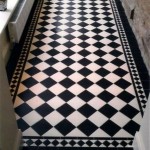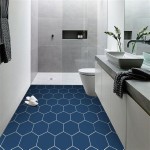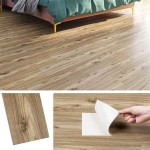Marble Mosaic Tile Bathroom Floor: An Enduring Elegance
Marble mosaic tile bathroom floors represent a timeless design choice, blending the inherent luxury of marble with the intricate patterns achievable through mosaic techniques. This flooring option offers a unique combination of aesthetic appeal, durability, and versatility, making it a popular choice for both residential and commercial bathroom applications. Understanding the various aspects of marble mosaic tile, from its types and installation to maintenance and cost considerations, is crucial for making an informed decision regarding its suitability for a particular bathroom space.
Marble itself is a metamorphic rock formed from limestone or dolomite, known for its characteristic veining and crystalline structure. The variety of colors and patterns found in marble are a result of the presence of different minerals during its formation. Marble mosaic tiles are typically small pieces of marble, often pre-arranged on a mesh backing, allowing for easier installation and the creation of complex designs. These designs can range from simple geometric patterns to intricate artistic representations, catering to a wide range of aesthetic preferences.
Types of Marble Mosaic Tile
The selection of marble mosaic tile encompasses various types, each possessing unique characteristics that influence its appearance and suitability for different bathroom styles. Understanding these distinctions is paramount for achieving the desired aesthetic and ensuring long-term performance.
One key distinction lies in the type of marble used. Carrara marble, with its soft white background and subtle gray veining, is a classic choice, offering a timeless and elegant look. Calacatta marble, distinguished by its bolder, dramatic veining and brighter white background, presents a more luxurious and contemporary aesthetic. Other marble varieties, such as Crema Marfil, Nero Marquina, and Emperador, offer warmer tones and richer colors, providing alternatives for various design schemes. The choice of marble type significantly impacts the overall ambiance and visual impact of the bathroom floor.
Beyond the marble type, the shape and size of the mosaic tiles contribute significantly to the overall design. Common shapes include square, rectangular, round, and hexagonal. Smaller mosaic tiles, often referred to as penny tiles, create a finely textured surface, while larger tiles offer a more streamlined and modern appearance. The arrangement of these tiles on the mesh backing also influences the visual effect. Linear patterns, herringbone designs, and basketweave patterns are among the many options available, each contributing a distinct character to the floor.
The finish of the marble mosaic tile also plays a crucial role in its appearance and functionality. Polished marble offers a glossy, reflective surface, enhancing the natural beauty of the marble and creating a sense of luxury. Honed marble, with its matte finish, provides a more subtle and understated elegance, also offering better slip resistance, making it a safer option for bathrooms. Tumbled marble, characterized by its slightly rough texture and rounded edges, imparts a rustic and weathered appearance, ideal for creating a more relaxed and informal atmosphere. The choice of finish should be carefully considered, balancing aesthetic preferences with practical considerations such as slip resistance and maintenance.
Installation Process for Marble Mosaic Tile
The proper installation of marble mosaic tile is critical for ensuring its longevity, stability, and aesthetic appeal. A meticulous approach, involving careful preparation and precise execution, is essential for achieving a successful outcome. While a professional installer is often recommended, a knowledgeable DIY enthusiast can also undertake the project with careful planning and attention to detail.
The first step in the installation process is thorough substrate preparation. The subfloor must be clean, level, and structurally sound. Any existing flooring or imperfections need to be removed, and the surface should be thoroughly cleaned to remove dust, debris, and grease. If the subfloor is uneven, a self-leveling compound may be necessary to create a smooth and even surface. This step is crucial for preventing cracks and ensuring proper adhesion of the tiles.
Next, a moisture barrier should be applied to the subfloor to protect the marble from moisture penetration. This is particularly important in bathrooms, where humidity levels are typically high. The moisture barrier helps to prevent water damage and the growth of mold and mildew. Once the moisture barrier is in place, a thin-set mortar specifically designed for natural stone should be applied using a notched trowel. The size of the notch should be appropriate for the size of the mosaic tiles to ensure proper bonding.
The mosaic tile sheets should then be carefully placed onto the mortar, ensuring that they are aligned according to the desired pattern. A rubber grout float should be used to gently press the tiles into the mortar, ensuring full contact and even spacing. Spacers may be used to maintain consistent grout lines. Once the mortar has dried according to the manufacturer's instructions, the grout can be applied. The grout should be spread evenly over the tiles, filling the grout lines completely. Excess grout should be wiped away with a damp sponge, and the tiles should be cleaned thoroughly.
After the grout has cured, a sealant specifically designed for natural stone should be applied to protect the marble from stains and water damage. The sealant should be applied according to the manufacturer's instructions, and it should be reapplied periodically to maintain its effectiveness. The final step is to clean the tiles thoroughly and allow them to dry completely before using the bathroom.
Maintaining Marble Mosaic Tile Floors
Maintaining the beauty and integrity of a marble mosaic tile bathroom floor requires regular cleaning and preventative measures. Marble, being a porous material, is susceptible to staining and damage from acidic substances. Implementing a consistent maintenance routine is crucial for preserving its luster and extending its lifespan.
Regular cleaning should involve sweeping or vacuuming the floor to remove loose dirt and debris. This prevents scratching the surface with abrasive particles. For routine cleaning, a pH-neutral cleaner specifically designed for natural stone should be used. Harsh chemicals, such as bleach, ammonia, and vinegar, should be avoided, as they can etch and damage the marble. The cleaner should be applied with a damp mop, and the floor should be rinsed thoroughly with clean water and dried with a soft cloth.
Preventative measures are also essential for minimizing the risk of staining and damage. Spills should be cleaned up immediately to prevent them from penetrating the marble. Acidic substances, such as lemon juice, coffee, and wine, can cause etching and discoloration if left on the surface for extended periods. Placing mats or rugs in high-traffic areas can help to protect the floor from scratches and dirt. Using coasters under toiletries and placing a shower mat inside the shower can also help prevent water damage and staining.
Periodically, the marble mosaic tile floor may require professional cleaning and sealing. Professional cleaning can remove stubborn stains and restore the luster of the marble. Sealing the floor helps to protect it from stains and water damage. The frequency of professional cleaning and sealing depends on the usage and traffic in the bathroom. It is generally recommended to have the floor professionally cleaned and sealed every one to two years.
In addition to regular cleaning and preventative measures, it is important to address any minor damage promptly. Cracks and chips should be repaired as soon as possible to prevent them from worsening. A marble repair kit can be used to fill in small cracks and chips. For larger repairs, a professional stone restoration company should be consulted. Addressing damage promptly can prevent further deterioration and preserve the overall appearance of the floor.
By following these maintenance guidelines, the beauty and elegance of a marble mosaic tile bathroom floor can be preserved for many years to come. Consistent cleaning, preventative measures, and prompt repairs are essential for maintaining its luster and protecting it from damage.
Beyond aesthetics and maintenance, cost is a significant factor to consider when choosing marble mosaic tile for a bathroom floor. Marble itself is a premium material, and the mosaic assembly adds further to the expense. Installation costs can also vary depending on the complexity of the design and the experience of the installer. Weighing the investment against the long-term value and aesthetic appeal is crucial for making a financially sound decision. Exploring alternative materials that mimic the look of marble, such as porcelain or ceramic tiles with marble-like patterns, can offer a more budget-friendly option while still achieving a similar aesthetic.

Best Shower Floor Tiles Non Slip Ideas 2025 Updated Country Floors

Marble Mosaic Tiled Floors Design Ideas

Mosaic Tile Combinations Hyperion S Design Guide

Tiles Talk 6 Ways To Use Marble Mosaic In Your Bathroom Perini

Carrara Marble White Italian Bathroom Floor Tiles Tenedos Tagged Mosaic Stone Tile Mosaics

Micronesia Parem Thassos Mint Green Marble Mosaic Tile

Prepare To Be Amazed By These 13 Mosaic Bathroom Floor Tile Ideas Hunker

Tiles Talk 6 Ways To Use Marble Mosaic In Your Bathroom Perini

Calacatta Marble Mini Mosaic Tiles Fast Delivery Starel Stones

Chevron Carrara White Marble Stone Mosaic Tile Bath Wall And Floor Kitchen Backsplash







